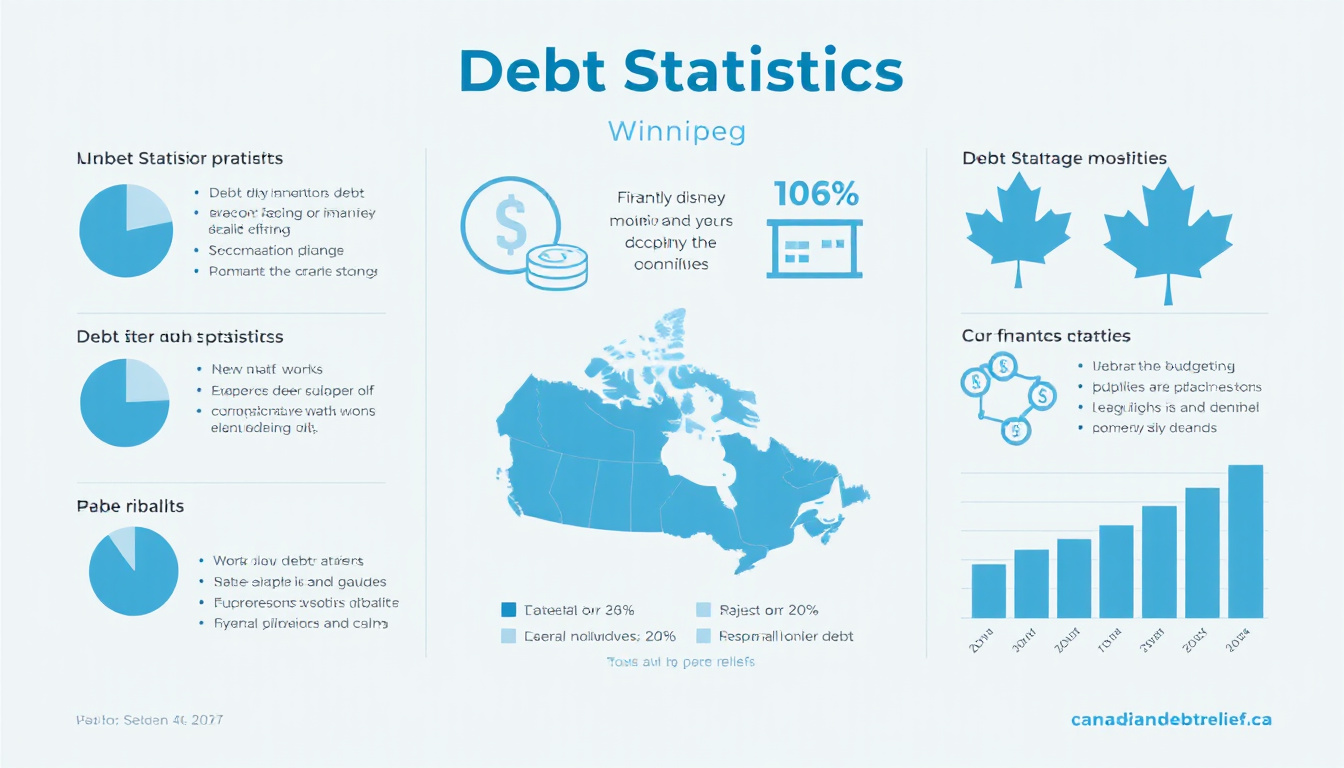Understanding Winnipeg Debt Statistics: Key Insights for Financial Planning

Tyler McAllister
Senior Finance Writer
As of 2025, approximately 63% of households in Winnipeg are projected to carry some form of debt, according to recent findings from Equifax. This statistic serves as a critical benchmark for understanding the financial landscape in the city. Analyzing Winnipeg debt statistics not only highlights the challenges faced by families and individuals but also underscores the broader economic implications for the local community.
This article delves into the current debt situation in Winnipeg, providing a comparative analysis of how these statistics have evolved over the years. By examining the impact of debt on personal financial health and the economic well-being of the city, readers can gain valuable insights. Moreover, we will discuss effective strategies for financial planning that can be employed in light of these trending debt statistics.

Key Takeaways
- Winnipeg’s debt landscape reflects significant changes that impact both personal and community financial health.
- Comparative analysis shows how debt statistics have evolved over the years, highlighting trends and shifts in borrowing habits.
- High debt levels can influence local economic conditions, affecting everything from job markets to public services.
- Understanding current debt statistics is essential for developing personal financial strategies that align with economic trends.
- Effective financial planning requires adapting to Winnipeg’s debt trends to ensure long-term fiscal health and stability.
Overview of Winnipeg’s Current Debt Landscape
In 2025, approximately 72% of Winnipeg households are reported to be in debt, highlighting a concerning trend in the region’s financial landscape. This figure represents a significant increase compared to previous years, signaling that more residents may be facing financial challenges. According to a recent survey conducted by Statistics Canada, personal debt levels in Manitoba have risen, with average debt per household now exceeding $81,000. Notably, credit card debt has surged by approximately 10% year-over-year, suggesting that many residents may be relying on credit as a buffer against rising costs of living. These Winnipeg debt statistics in 2025 serve as a critical indicator of the financial health of the city’s residents and raise questions about the long-term effects of increasing debt burdens on families.
Comparative Analysis of Debt Statistics Over the Years
As of 2025, approximately 42% of Winnipeg residents are reported to be in debt, a notable increase from 38% in 2020, according to a recent study by the Canadian Mortgage and Housing Corporation (CMHC). This trend highlights a growing concern about financial health in the city, as residents face rising living costs and economic pressures. Additional statistics reveal that the average debt-to-income ratio in Winnipeg has climbed to 175%, a significant jump from the 161% ratio observed in
2020. The data underscores the importance of targeted debt relief services, particularly as Winnipeg continues to experience economic fluctuations. Sources such as Statistics Canada and Equifax have confirmed these trends, indicating that the need for financial education and assistance is more critical than ever in urban centers across Canada.
‘Wealth consists not in having great possessions, but in having few wants.’ – Epictetus

Impact of Debt on Personal and Local Economic Health
As of 2025, approximately 72% of households in Winnipeg are reported to be carrying some form of debt, according to a recent study by Equifax. This significant figure highlights the growing financial strain on residents of the city and underscores the challenges many face in managing their personal finances. The prevalence of debt in Winnipeg not only affects individual financial health but also has broader implications for the local economy, as residents with high debt levels may have less disposable income to spend on goods and services. Furthermore, the increase in debt levels has been seen to correlate with rising default rates, which could lead to detrimental impacts on local businesses and overall economic growth. Understanding these Winnipeg debt statistics is crucial for policymakers and financial advisors aiming to address the repercussions of debt on both individual households and the regional economy.
Strategies for Effective Financial Planning in Light of Debt Trends
As of 2025, approximately 70% of households in Winnipeg are reported to be carrying some form of debt, highlighting significant financial pressures on residents. This statistic underscores the urgent need for effective financial planning strategies, considering the rising cost of living and interest rates. According to Equifax, the average debt load per household in Winnipeg has increased to nearly $36,000, which includes mortgages, credit cards, and personal loans. Understanding these Winnipeg debt statistics is crucial for individuals and families looking to create effective budgets, establish emergency funds, and prioritize debt repayment strategies. With debt levels expected to persist, leveraging resources such as financial advisors or credit counseling can be instrumental in navigating financial challenges. These proactive steps can help ease the burden of debt and improve overall financial health.
